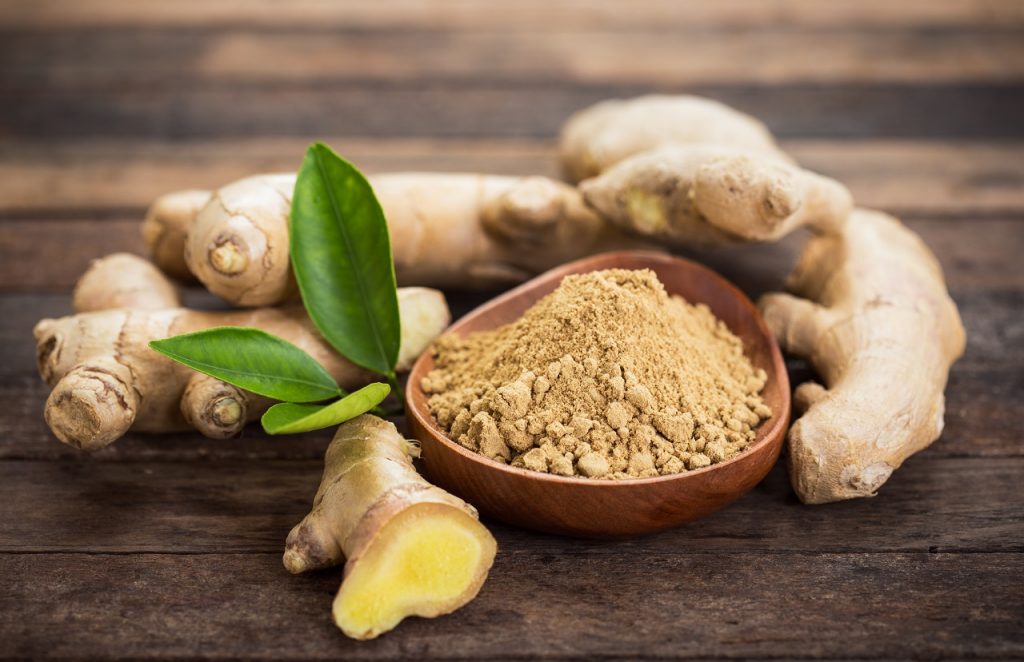 Ginger is native to India and China. It has been important in Chinese medicine for many centuries, and is mentioned in the writings of Confucius as well. It is also named in the Koran – the sacred book of the Muslims, indicating it was known in Arab countries as far back as 650 A.D. It was one of the earliest spice known in Western Europe, used since the ninth century. It became so popular in Europe that it was included in every table setting, like salt and pepper.
Ginger is native to India and China. It has been important in Chinese medicine for many centuries, and is mentioned in the writings of Confucius as well. It is also named in the Koran – the sacred book of the Muslims, indicating it was known in Arab countries as far back as 650 A.D. It was one of the earliest spice known in Western Europe, used since the ninth century. It became so popular in Europe that it was included in every table setting, like salt and pepper.
A common article of medieval and Renaissance trade, it was one of the spices used against the plague. In English pubs and taverns in the nineteenth century, barkeepers put out small containers of ground ginger, for people to sprinkle into their beer — the origin of ginger ale. In order to ’gee up’ a lazy horse, it is the time-honored practice of Sussex farmers to apply a pinch of ginger to the animal’s backside.
Ginger has long been ascribed aphrodisiac powers, taken either internally or externally. It is mentioned in the Kama Sutra, and in the Melanesian Islands of the South Pacific it is employed ‘to gain the affection of a woman’. Conversely, in the Philippines it is chewed to expel evil spirits. Ginger is a known diaphoretic, meaning it causes one to sweat. It was recorded that Henry VIII instructed the mayor of London to use ginger’s diaphoretic qualities as a plague medicine.
I can go on about the amazing health benefits of this root. Over the last few years, I have used and shared this remedy with so many clients and friends for so many conditions, and it has never failed to produce the desired results.
Be it any ailment such as the following
- Flu
- Common cold and cough
- Stomach pain
- Menstrual cycle pain
- PMS
- Digestive disorders
- Cancer ( building immunity and cellular health)
- Headaches and migraine
- Lowering cholesterol
- Controlling high blood pressure
- Boosting immunity and cellular health
- Arthritis, joint and bone pain
- Ginger has anti-aging properties
- Ginger stimulates blood rush to sexual organs
How Can You Best Consume Ginger?
You can use ginger in food or just have it plain. I like it best in a cup of warm herbal brew. You can try this simple and healing herbal brew:
- Boil a 1-inch piece of washed and peeled ginger in water for 10 minutes with 2 cloves
- Add a slightly split cardamom (optionally, you can also add fresh lemongrass or fresh basil for flavor)
- Simmer for 15 minutes
- Strain and pour into a mug.
- Add 2 pinches of powdered cinnamon, 1 tsp of organic raw honey or jaggery
- Sip it hot!
This drink will boost your immunity and make you feel better almost instantly! Make it part of your lifestyle.
Disclaimer: Always check with your doctor especially if you are pregnant or have gall stone issues, before using ginger.
We hope the article helps you! For more on nutrition and healthy living, check out Healthy Reads. To get these tips directly from a GOQii Coach, subscribe for personalized health coaching here: https://goqiiapp.page.link/bsr
#BeTheForce
 Your body is constantly communicating with you. Very small episodes of acidity, bloating, indigestion, etc. says a lot about your lifestyle and overall health. Are you paying attention? It is important for us to know that about 70% of the immune system is located in our gut and the gut absorbs nutrients that support body functions from energy production to hormone balance, skin health to mental health and toxin & waste elimination too.
Your body is constantly communicating with you. Very small episodes of acidity, bloating, indigestion, etc. says a lot about your lifestyle and overall health. Are you paying attention? It is important for us to know that about 70% of the immune system is located in our gut and the gut absorbs nutrients that support body functions from energy production to hormone balance, skin health to mental health and toxin & waste elimination too. Do you love your traditional uttapam? Well, you’re about to love this healthy twist we’ve added to it more! Quick, easy to prepare and nutritious, the Oats Sprouts and Vegetable Uttapam is a mouthwatering recipe just as it is healthy. As it is made with oats, it provides better satiety too. Let’s get started!
Do you love your traditional uttapam? Well, you’re about to love this healthy twist we’ve added to it more! Quick, easy to prepare and nutritious, the Oats Sprouts and Vegetable Uttapam is a mouthwatering recipe just as it is healthy. As it is made with oats, it provides better satiety too. Let’s get started!  Monsoons entice you and increase your cravings for street food. But these cravings can come at a cost. During monsoons, food and water are the two things that get contaminated easily. This eventually leads to diseases such as diarrhea, since this season is a time for germs and bacteria to breed in large numbers. To help you out, here are some tips to help you prevent diarrhea during monsoons.
Monsoons entice you and increase your cravings for street food. But these cravings can come at a cost. During monsoons, food and water are the two things that get contaminated easily. This eventually leads to diseases such as diarrhea, since this season is a time for germs and bacteria to breed in large numbers. To help you out, here are some tips to help you prevent diarrhea during monsoons.


